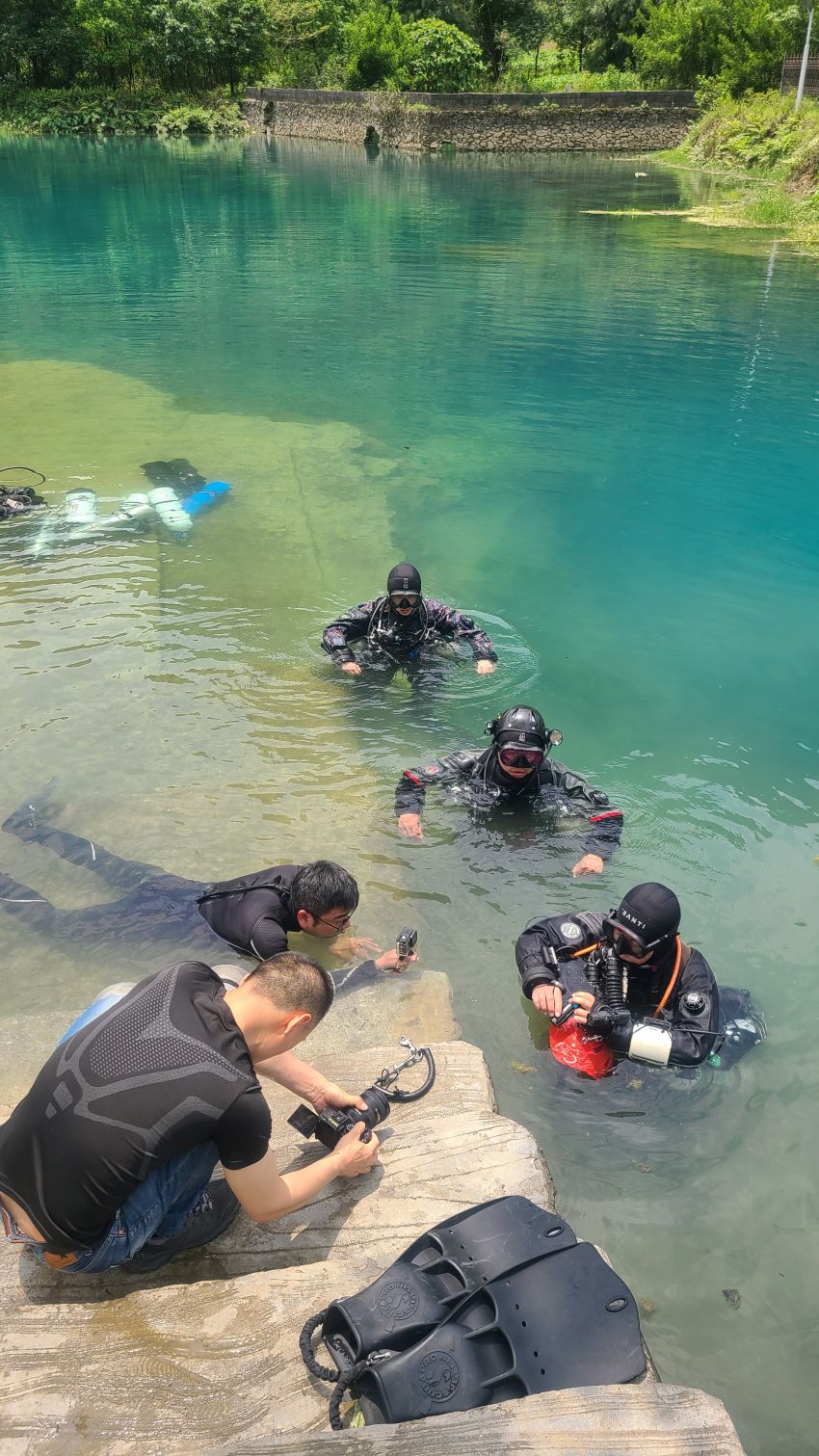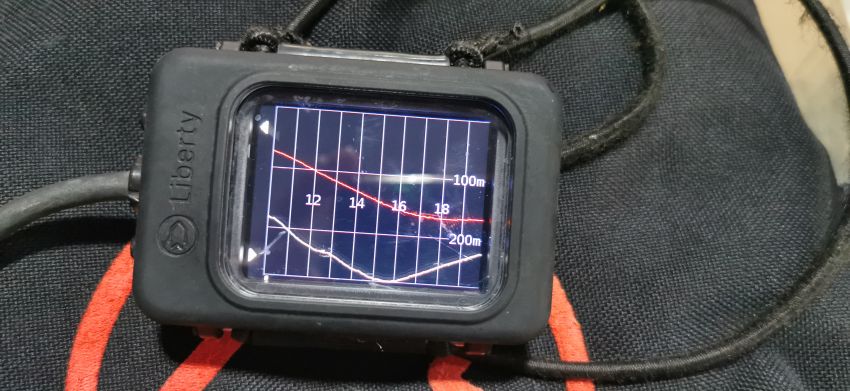A 277.4m deep cave diving record in Asia
At 2:10am, 27th April, 2023, PSAI China IT-1107 Han Ting (Greco) surfaced after a 12.5 hours deep cave dive and achieved a new Asia deep cave diving record to 277.4m in GuangXi, China.

Before The Dive

Final Check Before Descent
Ting used two Liberty SM CCR for the dive together along with the 3rd unit station at 50m for standby on the way up. His last decompression was finished at 10m depth in a habitat set up 2 weeks before. An O2/Neon mix also used as the final deco gas.
The dive is a part of the on-going project (DJCF – Duan’s Jiudun Cave Features) to explore this cave which it’s bottom is still not yet to be reach.

Jin Du Cave Map
Below is from HAN Ting after his dive:
“Yesterday, I took on a new challenge at Jiudun and eventually reached a turning point at 277 meters, breaking the Asian record.

The 2 Computers

Descent Phase

Bottom Phase

277m
In previous attempts, I went south-north for deep diving, but this time I tried diving both up and down in the northern cave. The descent was slower and more winding, making the situation more complicated. From the 40-meter cave entrance, I had to swim through a 20-meter horizontal passage to reach the 50-meter vertical well entrance. The 50-120 meter vertical well passage was quite narrow, followed by a slope from 120-170 meters until reaching the vertical well below 170 meters. Additionally, some slight ear equalization problems caused some delay. The planned depth was between 270-290 meters, with an alert time of 15 minutes set for turning back and a mandatory decompression plan of no more than 12 hours. When I reached over 270 meters, I felt very good, and HPNS(High-pressure nervous syndrome) did not show any obvious effect. When the Alert sounded, I hesitated for a second, as I knew I could break the world record by just one more minute. However, I was pleased that I resisted the temptation, stopped the descent according to plan, tied knots, marked the arrow, and ascended. The later decompression was perfectly in line with the plan. There will be more opportunities in the future.
I tried many new methods this time, such as setting up a decompression habitat in advance at 10 meters, which was very useful. During the 12-and-a-half-hour dive, I spent five hours in the tent eating and drinking comfortably.

Inside the Habitat

The Habitat

Body Checking
I also made significant adjustments to the decompression plan, using neon as a replacement for inert gas to accelerate decompression. The results were very significant, as I felt better both physically and mentally after the dive. I am grateful for the professional guidance from DHS(Divers Health Service) and the on-site medical support. We used ultrasound to check for bubbles in the decompression habitat. Additionally, I did an extreme test for the Huawei ULTIMATE sport watch, take it down to 123 meters and hanging it on a node during the descent and carrying it throughout the return journey. The depth was not a problem, and the battery was very powerful, with over 20% remaining after 12 and a half hours.

On The Way Up

Just Surface
Summary: Technology can help explorers break through limits and explore extreme environments more safely and efficiently.
Finally, thanks to the ‘underwater support team’ @John @Edi @King @kiki, and the ‘surface and land support team’ @Director Song @Chung Siu @Violet @Director Zhao and photographer, as well as all the friends who provided equipment support!”

Team

